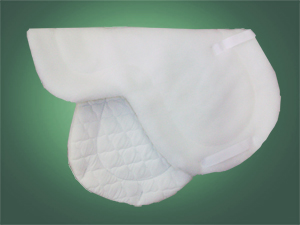Clinics can be a fantastic way to get off the property while at the same time getting coaching from another set of eyes. Turning your horse out well for a clinic is a way of showing respect for the clinician, so this post will cover the ideal turnout for both informal and very formal clinics.
The best way to find out what is expected in terms of turnout for a particular clinic is to contact the organizer. If formal turnout is expected, they are likely to mention it at some point in the communication prior to the clinic. For most clinics, informal turnout should suffice as full formal turnout is usually only seen for a select few clinics with certain world-class clinicians.
Informal Turnout
My general rule of thumb is that the horse and rider shouldn't look out of place in a mid-week jumper class. That means that everything should be neat and tidy and fairly conservative, but without braiding or wearing a show jacket.
For warm-weather clinics, the rider should wear a tucked-in polo shirt, beige breeches (or breeches of a similarly light colour), belt, polished field boots and a helmet. Many riders will also wear gloves, and hair should be neatly contained as you would wear it at a show. If you must use paddock boots and half chaps instead of field boots, make sure that they are clean and polished.
In cooler weather, a fitted sweater can be added, and for even colder weather, a fitted jacket. Baggy clothing is not acceptable when the clinician needs to be able to see you ride! In extremely cold weather, the use of winter riding breeches or boots would certainly be understood even though these sometimes do not come in show colours or finishes. Riding in a clinic will usually warm you up quickly, so wearing layers that can easily be removed is ideal.
The horse should be as clean as possible, including any white markings. The mane should be neat and shortened (braid it over before the clinic if it tends to be messy) and the tail fully brushed out. The hooves can be oiled and the face and legs should be trimmed. In cold weather, a full show clip is not necessary. The saddle pad can be either square or shaped, but should be white, black or another conservative colour. The tack should all be just as clean as it would be for a horse show, and you can start with the set-up that you feel most comfortable in, aside from any devices like draw reins that do not belong at a clinic. Try to bring a few extra bits, spurs and martingales with you in case the clinician wishes for you to try something different. You should also carry a crop unless your horse cannot be ridden with one.
Formal Turnout
Formal turnout is essentially what you might show in on the weekend, adding in braiding and a show shirt and jacket. Again, this type of turnout is not common for jumping clinics (99.9% of the time you'll be fine with the informal turnout) so ask the organizer if you suspect that it might be expected.
Formal turnout should follow the same general rules as informal turnout except for braiding the mane and wearing a show jacket instead of a polo shirt . I would expect to see a hunter in a fitted pad with hunter braids while the jumper can wear a conservative square pad with either hunter or jumper braids.
The horse should also have a full body clip in cold weather for this sort of clinic. The odds are that if the horse is entered in such a high-level clinic, it will be worked hard enough at home to warrant the full clip, anyway.
 Ecogold: Both forward and regular flaps in a variety of sizes, along with specialty pads.
Ecogold: Both forward and regular flaps in a variety of sizes, along with specialty pads.













